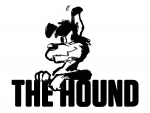The PwC strategic review released last year, is full of information that is useful to all in the New Zealand wine industry. So over the next few months, NZWinegrower will precis the findings, as they relate to you, the members. Tessa Nicholson looks at the question regarding demand.
The demand question PwC undertook as part of the review was; What are the major changes and impacts of rapidly changing markets? How is this impacting the size of key markets, New Zealand’s share of those markets and our position in premium market segments?
As wine consumers drink less, the value of wines is increasing, indicative of premiumisation having a worldwide impact. That, PwC says, is a positive for New Zealand producers.
There is also a move by consumers, particularly millennials, towards products that are sustainable, authentic and provide unique wine experiences. Also good news.
“New Zealand’s reputation for high quality, sustainable wine sits well with trends, with Marlborough Sauvignon Blanc (MBSB) dominating in a varietal that is on trend, that’s “light and fresh”.
In terms of our major markets, there is also good news for New Zealand producers, although PwC does admit there are some vulnerabilities.
Two of our three top markets, the US and UK have seen imports of New Zealand wine rise, with market retail growth strong. However, Australia, another important market has plateaued. It is a similar story when you look at value – in the US and UK it is up, but PwC says Australia is more “challenged”. And despite China being quite a small market for our wine, it has the highest average price, while across the Tasman, our prices are falling.
Breaking down the markets one by one, is part of the Demand question.
US
Over 90 percent of New Zealand wines are in the super-premium and premium price tiers. On average our wines are priced at 20 percent market premium.
We exported close to 74 million litres to the US at MAT March 2018. Close to a third of that was unpackaged wine. That may not seem like good news, but according to the report, “New Zealand is the US’ most valuable unpackaged wine import with a significant 25 percent market value share as a result of the premium price” of our wines.
The vulnerability spoken about earlier, comes with the news that despite our success in the US unpackaged market, volume and value growth were stagnant in 2017.
The UK
This market has always been one of New Zealand’s most important. Currently, PwC says, it is the largest export market by volume and second largest by value. Alcohol consumption overall is dropping in this market, but “the British are willing to pay for better quality”.
We are the eighth largest exporter of wine to the UK off-trade by volume and value, and in the year to March 2018, we had the greatest growth in both.
The volumes of our Sauvignon Blanc exports have risen on average by 14 percent pa since 2016 and this growth offers the opportunity to help boost the sales of other varieties.
But Brexit is the vulnerability in the UK market. Since the decision to leave the EU, the British pound has dropped dramatically. This is making all imported products more expensive, including New Zealand wine. That is not likely to change in the near future, as continued uncertainty surrounds just how Brexit will be enacted.
Australia
Our third largest market, 11 percent of all wine consumed in Australia comes from our part of the world. MBSB makes up the largest portion of that, however the vulnerability is that our Sauvignon Blanc exports have declined in the last three years.
Pinot Noir volumes and values are steadily rising. New Zealand Pinot is now the second most premium product in the market with year on year price and volume growth of 3 percent and 11 percent respectively.
Our Rosé is also on the rise, having grown 290 percent since 2017 (admittedly from a low base).
New Zealand Pinot Noir, Rosé and own label present opportunities for New Zealand to regain traction in the changing Australian market,” the report states.
Newer markets
“There is potential for growth in Asian markets, particularly in China for all New Zealand wine varieties,” PwC says.
The markets are experiencing growth of 2.8 to 6.7 percent in the still light grape wine category, and there is evidence of growing premiumisation in most markets.
While our wines are still low as a portion of key markets in Asia, the value is growing between 6 and 17.6 percent.
In China our exports have increased by around 10 percent pa since 2011, but still only make up one percent of all our wine exports. That percentage has not changed in five years.
While the potential is there in China, market entry is difficult, PwC says, and requires special attention.
Japan is potentially a growth market for New Zealand. While Chilean wine is the most popular imported wine by volume, that has been helped by a FTA. New Zealand value growth exceeds the average total market for imported wine growth and PwC believes it is a market that holds potential for our premium wines.
Hong Kong; our exports are increasing at approximately 1.4 percent since 2011. Our wines make up 2 percent of the total of imported wines in Hong Kong but by value, make up just 0.8 percent. “The difference between value and volume suggest New Zealand wines are not commanding the same average pricing premium as other importing countries.”
Europe
PwC says outside of traditional export destinations, new exports to destinations in Central Europe have grown at a compound annual growth rate (CAGR) of 13.3 percent in the period from 2011 to 2018. That is good news. Germany and the Netherlands are quickly becoming some of the most important European markets for New Zealand wine showing a CAGR of close to 3 percent.
In terms of what needs to be done to grow these emerging markets, the PwC report says this; “New Zealand wine producers should leverage premium, niche and sustainable elements to benefit from changing consumer tides in these alternative markets in order to meet NZW’s 2020 export target.”
The full PwC Strategic Review is available to read within the NZW members section.





